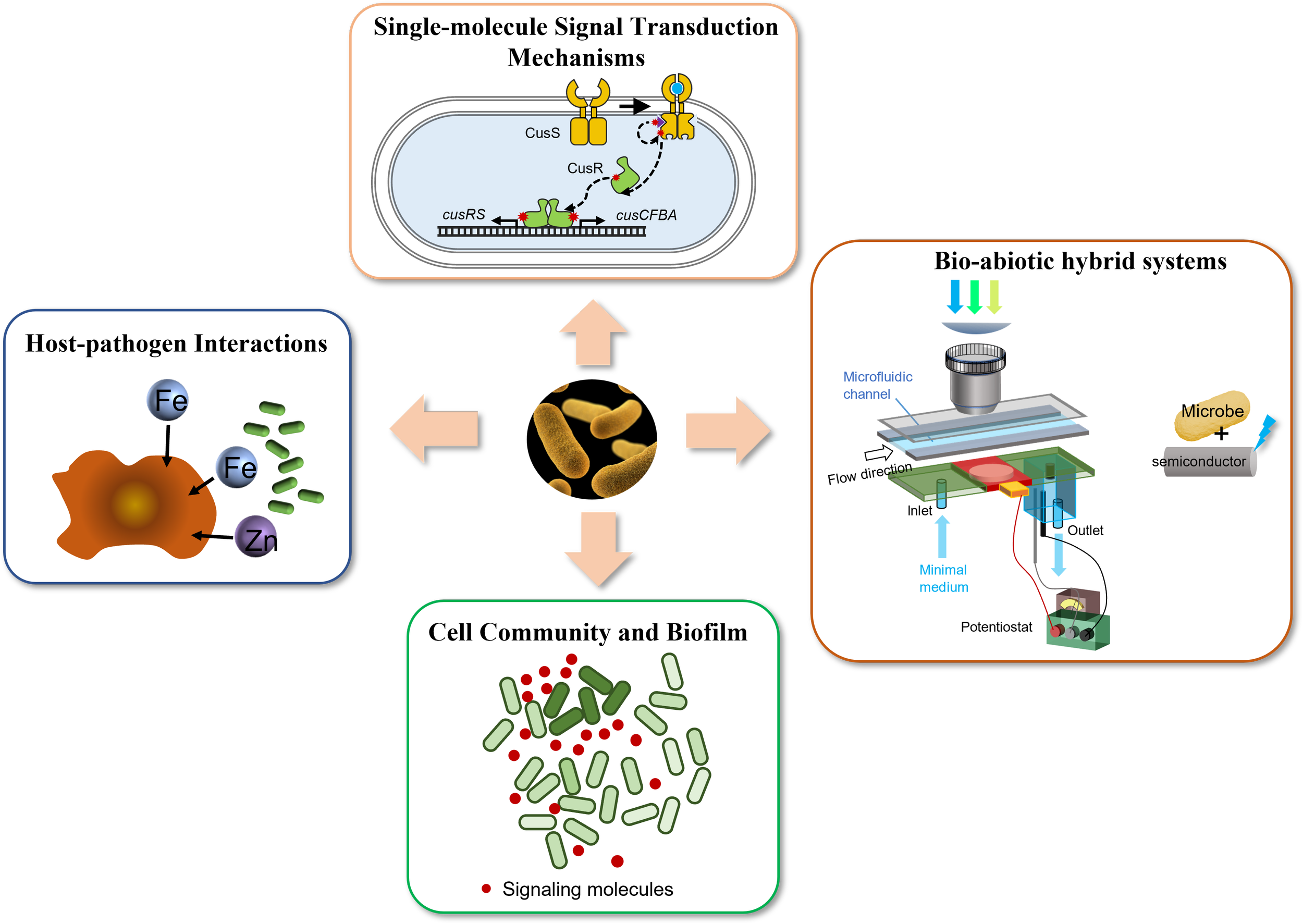
Functional Biological Imaging of Complicated Systems
We shoot lasers at cells and watch single molecules with super-resolution
Cells actively interact with each other and the outside surroundings. Microscopic study at the cellular interface is critical in a wide variety of aspects, including host-pathogen interplay in infectious diseases, cell communications in biofilms, and electron/energy transfer in biotic-abiotic hybrid systems. However, even cells with the exact same genotype have large heterogeneity in terms of metabolic states, protein expression levels and local microscopic environment, therefore bulk measurements can only report the ensemble average. In contrast, single-cell and single-molecule super-resolution techniques (awarded the 2014 Nobel Prize in Chemistry) can well resolve this heterogeneity, hence uncover clearer, more realistic mechanisms.
Our lab integrates super-resolution and other advanced optical imaging techniques with various chemical, biological and engineering tools to study complex microbial systems with high resolution and sensitivity at different scales, from collective bulk cell behaviors down to single-molecular mechanisms. Learn more here.

